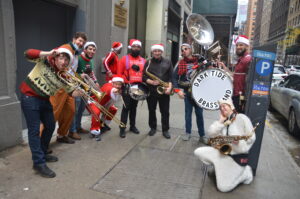SantaCon is back 2021 NYC
NEW YORK — Thousands of Santa Clauses in Manhattan today because SantaCon is back after a year off due to COVID-19.
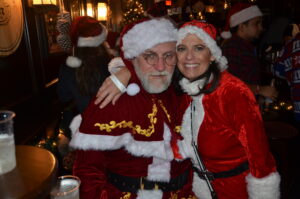
New Yorkers have a love-hate relationship with the annual bar crawl, which kicked off at 10 a.m. in Midtown, Manhattan. But that hasn’t stopped throngs of revelers from gathering.
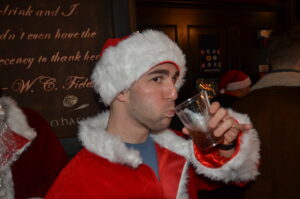
Each year, the event raises money for charities across the city like Girl Scouts of New York and City Harvest.
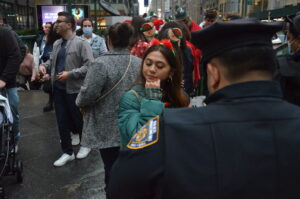
SantaCon is an annual pub crawl in which people dressed in Santa Claus costumes or as other Christmas characters parade in various cities around the world.
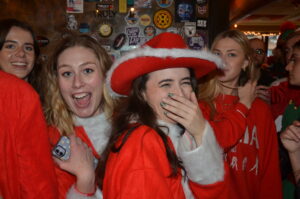
A December 2014 cover story in the Village Voice recounted how SantaCon had evolved from “joyful performance art” that originated in San Francisco to a “reviled bar crawl” of drunken brawling, vandalism, public urination and disorder in New York City and elsewhere, resulting in fierce community resistance and disavowals from the originators of the event.
Origins
SantaCon began in San Francisco in 1994, inspired by a Mother Jones article on the Danish activist theatre group Solvognen. In 1974, Solvognen gathered dozens of “Santas” in Copenhagen to hand out items from the shelves of a department store to customers as “presents” before they were arrested. Staged as street theater by a local prankster group, the Cacophony Society which had grown out of the earlier Suicide Club the aim was to make fun of Christmas and the rampant consumerism associated with the holiday. Originally called Santarchy and influenced the Surrealist movement
– Discordianism, and other subversive art currents, it was not intended to be a recurrent event. However, the event occurred again in San Francisco in 1995 as a Cacophony Society event with 100 participants and at least two arrests.
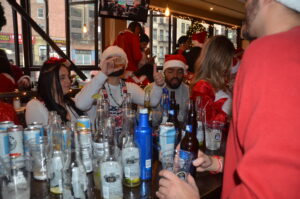
SantaCon came to Portland in 1996 to Seattle in 1997, and to Los Angeles and New York in 1998, when a “young San Franciscan strapped on a fake white beard, donned a $12 red suit, and led 200 Santas as they went caroling up Fifth Avenue in Manhattan,” to the delight of passersby, since then evolved and spread to 44 countries around the world, with varying versions and interpretations.
